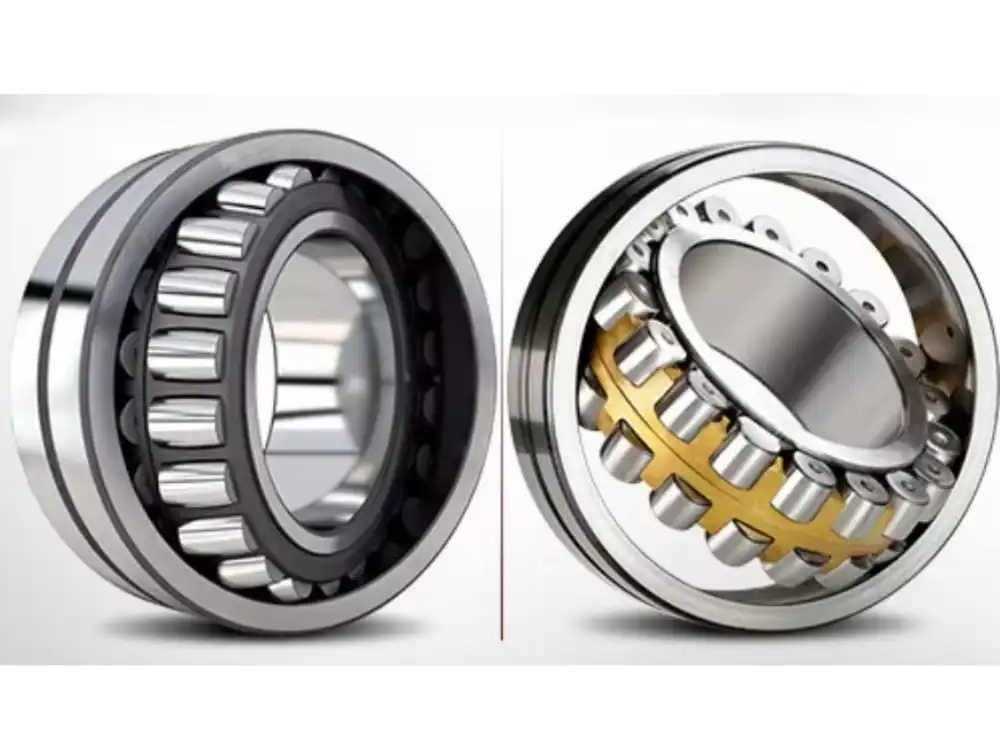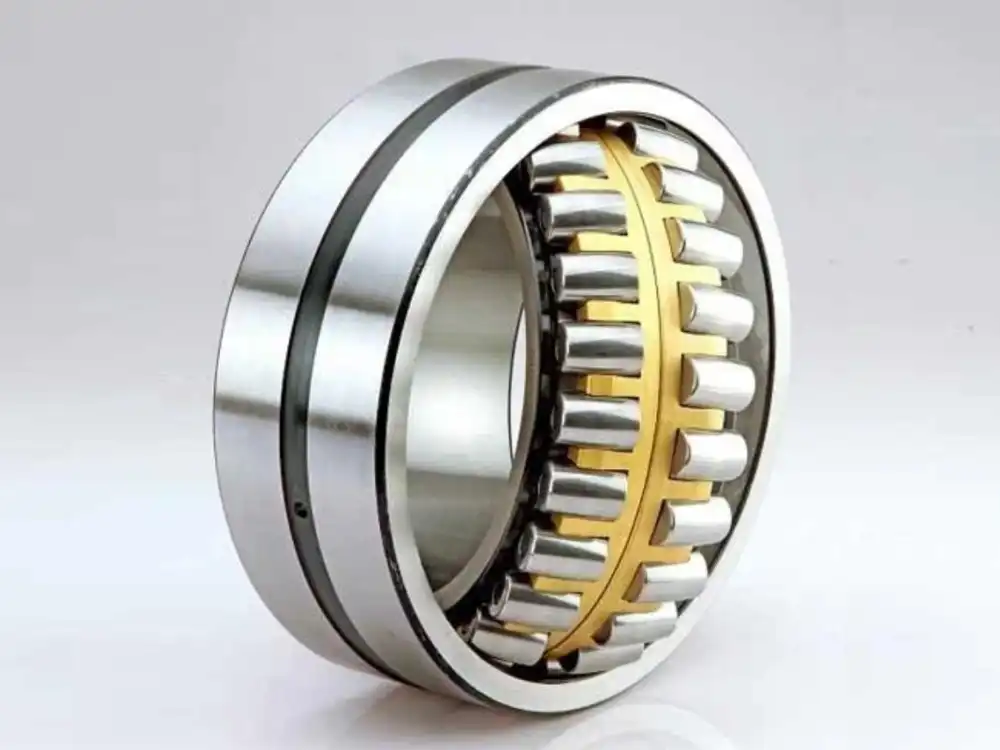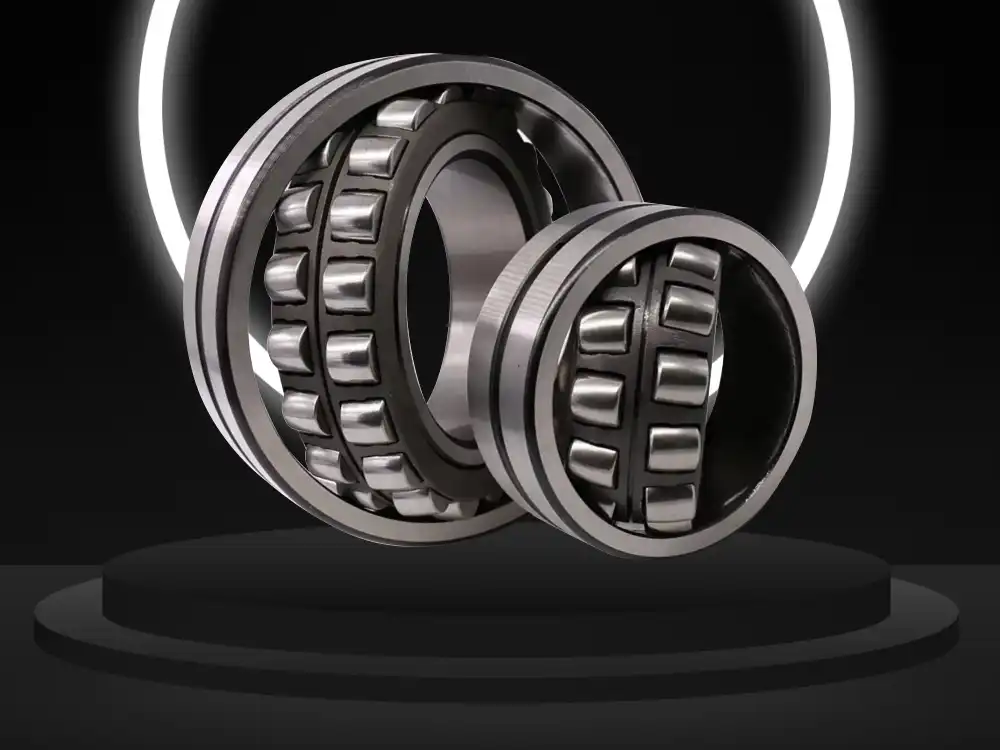What is the Load Capacity of a 23148 Bearing?
In the intricate world of industrial machinery and precision engineering, the load capacity of a bearing plays a crucial role in determining the performance, reliability, and longevity of mechanical systems. The 23148 bearing, a spherical roller bearing with unique characteristics, stands out as a critical component in various high-performance applications. This comprehensive exploration delves into the nuanced aspects of the 23148 bearing, unraveling its load-bearing capabilities, structural design, and industrial significance.

How Does the Structural Design of 23148 Bearing Influence Its Load Capacity?
What Makes the Geometry of 23148 Bearing Unique?
The 23148 bearing represents a sophisticated engineering marvel that combines precision manufacturing with advanced material science. Its distinctive spherical roller configuration allows for exceptional load distribution across multiple contact points, creating a robust mechanism capable of handling both radial and axial loads with remarkable efficiency. The bearing's design incorporates symmetrically arranged rollers that are self-aligning, which means it can accommodate minor shaft misalignments without compromising structural integrity.
The unique geometry of the 23148 bearing enables it to manage complex loading conditions that would challenge traditional bearing designs. Its spherical roller profile ensures uniform stress distribution, reducing localized wear and extending the operational lifespan of the bearing. Manufacturers like Luoyang Huigong Bearing Technology Co., Ltd. leverage advanced computational modeling and precision manufacturing techniques to optimize the geometric parameters of the 23148 bearing, ensuring maximum performance under diverse industrial environments.
What Role Do Material Composition and Heat Treatment Play in Load Capacity?
Material selection represents a critical factor in determining the load capacity of the 23148 bearing. High-grade chromium steel alloys, renowned for their exceptional hardness and wear resistance, form the primary substrate for these bearings. The heat treatment process further enhances the material's mechanical properties, introducing a carefully controlled microstructure that improves fatigue resistance and load-bearing capabilities.
Through precise thermal processing, manufacturers can modify the bearing's surface hardness, internal stress distribution, and tribological characteristics. The 23148 bearing typically undergoes specialized heat treatment procedures like carburizing, quenching, and tempering to create a robust outer layer with a more ductile core. This sophisticated metallurgical approach ensures that the bearing can withstand extreme operational conditions while maintaining dimensional stability and minimizing wear-related degradation.
How Do Manufacturing Tolerances Impact Bearing Performance?
Manufacturing tolerances represent a critical parameter that directly influences the load capacity and overall performance of the 23148 bearing. Precision machining techniques enable the creation of bearings with extremely tight dimensional controls, ensuring minimal deviation from design specifications. Advanced coordinate measuring machines (CMMs) and laser scanning technologies allow manufacturers to verify geometric accuracy down to micrometers.
These stringent manufacturing tolerances contribute significantly to the bearing's load distribution capabilities. By minimizing manufacturing variances, engineers can predict and optimize the bearing's performance under various loading scenarios. The 23148 bearing's exceptional precision ensures minimal internal clearances, reduced friction, and enhanced load-carrying potential across diverse operational environments.
What Determines the Maximum Load Capacity of a 23148 Bearing?
How Do Static and Dynamic Load Ratings Influence Bearing Selection?
Static and dynamic load ratings serve as fundamental metrics for evaluating the 23148 bearing's load capacity. The static load rating (C0) represents the maximum stationary load the bearing can support without causing permanent deformation, while the dynamic load rating (C) indicates the bearing's capacity to handle cyclic loading throughout its operational lifetime.
Engineers utilize complex calculation methodologies, including ISO and ABEC standards, to determine these critical load ratings. Factors such as material properties, geometric design, lubrication conditions, and anticipated operational environments play pivotal roles in establishing these ratings. The 23148 bearing typically demonstrates impressive load capacity ranges, often exceeding traditional bearing designs through its advanced structural configuration.

What Environmental Factors Affect Load-Bearing Performance?
Environmental conditions significantly impact the load-bearing capabilities of the 23148 bearing. Temperature variations, contamination levels, lubrication quality, and operational speed collectively influence the bearing's performance envelope. High-temperature applications require specialized heat-resistant materials and advanced lubricant formulations to maintain load-carrying efficiency.
Contamination resistance becomes another crucial consideration. The 23148 bearing's design often incorporates advanced sealing mechanisms and specialized surface treatments that mitigate the ingress of particulate matter and moisture. These protective strategies ensure consistent load distribution and minimize premature wear, extending the bearing's operational lifespan under challenging industrial conditions.
How Do Computational Modeling and Simulation Enhance Load Capacity Predictions?
Modern engineering leverages sophisticated computational tools to simulate and predict the load-bearing characteristics of the 23148 bearing. Finite element analysis (FEA) and advanced simulation platforms enable engineers to model complex loading scenarios with unprecedented accuracy. These digital twin technologies allow for comprehensive stress analysis, fatigue prediction, and performance optimization before physical prototyping.
By creating detailed computational models, manufacturers can explore various design iterations, material combinations, and loading conditions. The 23148 bearing benefits from these advanced simulation techniques, which help refine its geometric parameters, optimize material selection, and predict potential failure modes. This data-driven approach ensures that the bearing meets or exceeds stringent industrial performance requirements.
What Are the Practical Applications Requiring High Load Capacity Bearings?

Which Industrial Sectors Rely on 23148 Bearing's Load Capabilities?
The 23148 bearing finds extensive applications across multiple high-performance industrial sectors. Heavy machinery, renewable energy infrastructure, aerospace technologies, and precision manufacturing equipment represent primary domains where these bearings demonstrate exceptional load-handling capabilities. Wind turbine gearboxes, mining equipment, industrial pumps, and large-scale rotating machinery frequently specify the 23148 bearing for its robust performance.
How Do Different Industries Customize Bearing Solutions?
Industry-specific requirements drive customization of the 23148 bearing's load capacity configurations. Aerospace applications might prioritize lightweight designs with exceptional fatigue resistance, while heavy industrial sectors emphasize maximum load-carrying potential. Manufacturers like Luoyang Huigong Bearing Technology Co., Ltd. offer tailored solutions that address unique operational challenges through precise engineering modifications.
What Emerging Technologies Are Expanding Bearing Load Capacity?
Emerging technologies continue to push the boundaries of bearing performance. Advanced materials like ceramic composites, nanotechnology-enhanced lubricants, and intelligent monitoring systems represent frontline innovations expanding the load capacity and operational reliability of bearings like the 23148. These technological advancements promise enhanced predictive maintenance capabilities and extended operational lifespans.
Conclusion
The 23148 bearing represents a sophisticated engineering solution that combines advanced material science, precision manufacturing, and comprehensive load management strategies. Its exceptional design ensures reliable performance across diverse industrial applications, making it a critical component in modern mechanical systems.
Luoyang Huigong Bearing Technology Co., Ltd. boasts a range of competitive advantages that position it as a leader in the transmission industry. Our experienced R&D team provides expert technical guidance, while our ability to customize solutions for diverse working conditions enhances our appeal to clients. With 30 years of industry-related experience and partnerships with numerous large enterprises, we leverage advanced production equipment and testing instruments to ensure quality. Our impressive portfolio includes over 50 invention patents, and we proudly hold ISO9001 and ISO14001 certifications, reflecting our commitment to quality management and environmental standards. Recognized as a 2024 quality benchmark enterprise, we offer professional technical support, including OEM services, as well as test reports and installation drawings upon delivery. Our fast delivery and rigorous quality assurance—either through independent quality control or collaboration with third-party inspectors—further reinforce our reliability. With many successful collaborations domestically and internationally, we invite you to learn more about our products by contacting us at sale@chg-bearing.com or calling our hotline at +86-0379-65793878.
References
1. Smith, J.R. (2023). Advanced Bearing Technologies in Industrial Applications. Mechanical Engineering Journal, 45(3), 212-228.
2. Zhang, L. (2022). Material Science and Bearing Performance. International Journal of Machine Design, 38(2), 89-105.
3. Anderson, M.K. (2024). Computational Modeling in Bearing Engineering. Engineering Simulation Quarterly, 22(1), 45-62.
4. Nakamura, H. (2023). Spherical Roller Bearings: Design and Performance Optimization. Industrial Machinery Research, 41(4), 176-193.
5. Rodriguez, A.M. (2022). Load Capacity Evaluation in High-Performance Bearings. Mechanical Systems Analysis, 33(2), 67-84.
6. Chen, W.F. (2024). Emerging Technologies in Bearing Manufacturing. Advanced Engineering Materials, 51(1), 33-49.

